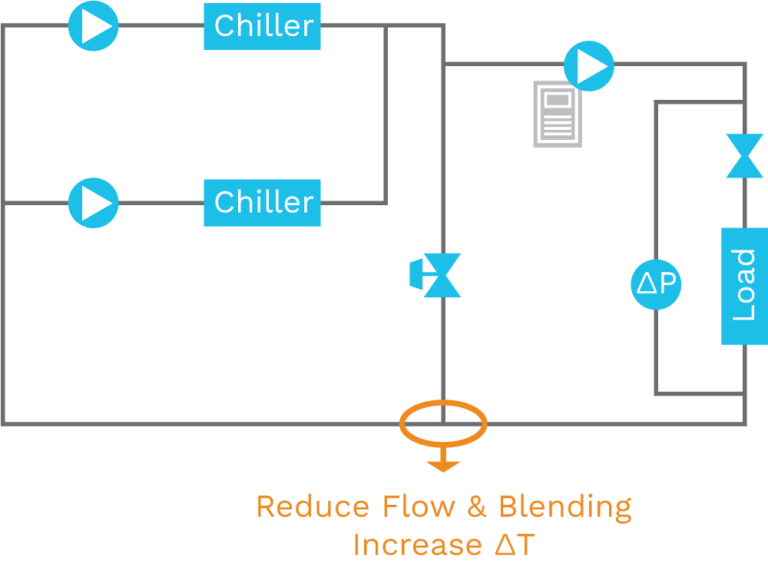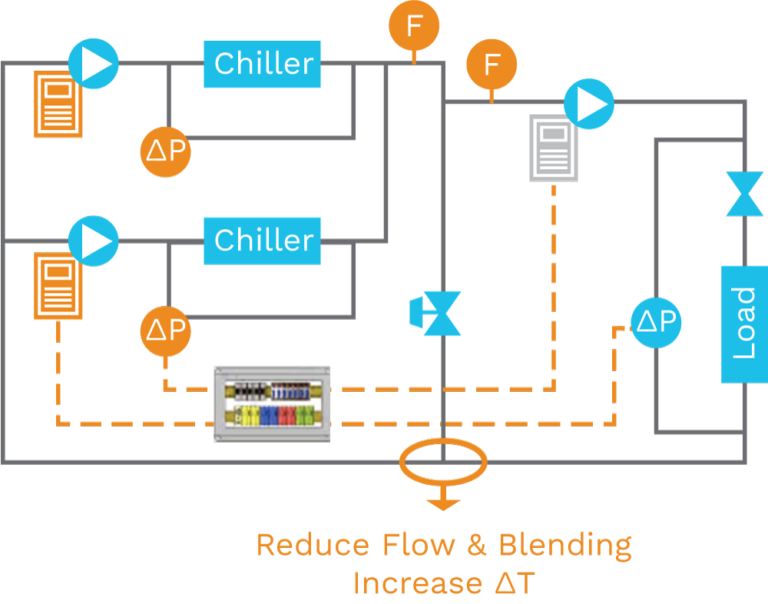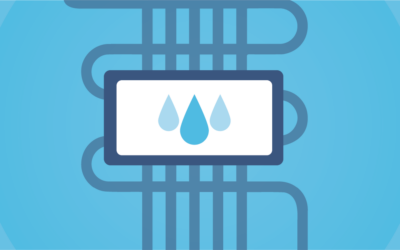With the introduction of variable speed drives in the 1970s, the Primary/Secondary (P/S) design was created to take advantage of the newfound ability to modulate flow with load and the added flexibility for chiller staging. At the same time, the system met the requirement for constant evaporator flow.
Quickly becoming the standard, the primary/secondary design continued to be used in new plant construction, even after microprocessor chiller controls unlocked previously unreachable efficiency gains in the 1990s. The main shortcoming of the P/S layout is that its cooling strategy is solely focused on the hottest day of year, creating inadequate energy efficiency for the remaining 364.
P/S bypass blending represents one of the biggest energy efficiency drawbacks of the P/S system because:
- Chilled water not used by the load flows through the bypass and blends with warm return water
- Blending decreases the temperature of the return water into the chiller, thereby lowering ΔT
- Chillers must work much harder than necessary to maintain the designated temperature setpoint
Effective Energy Solutions
Fortunately, these existing systems do not need to remain inefficient thanks to the tekWorx Integrated Primary/Secondary (IPS®) retrofit design. The IPS® retrofit requires only minor mechanical and control system modifications, a short installation time and minimal system disruption.
Key aspects of the IPS® retrofit include:
- Minimizing bypass flow and associated return water blending that degrades system ΔT either by insertion of bypass valve or by controlling loop flow
- Adding variable speed controls for pumps, fans and chillers, as needed
- Adding new instruments to measure process variables affecting operation and efficiency (usually flow and kW) as needed
- Using adaptive control algorithms for continuous online equipment adjustment
IPS® Implementation Options
The most common application of the IPS® is via the addition of a valve that eliminates bypass flow and improves system control.

In instances where inserting a bypass valve is not an option – because it requires plant shutdown or other circumstances make this modification impractical – there is an alternative. Instead, tekWorx matches the primary and secondary loop flow to minimize bypass flow.

The Primary/Secondary configuration in hydronic cooling systems provides a balanced approach to achieving efficient and reliable cooling. Its ability to maintain stable chiller operation while dynamically responding to changing cooling demands makes it an excellent choice for large commercial and industrial applications. With the integration of tekWorx IPS® strategies and optimization technologies, the traditional Primary/Secondary configuration can be further enhanced to optimize comfort levels, minimize energy consumption, and achieve long-term sustainability goals.




